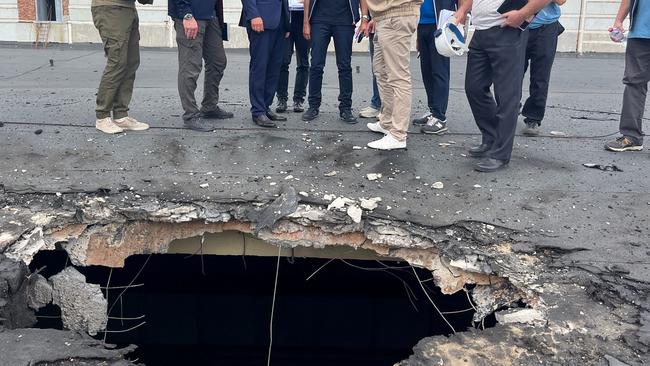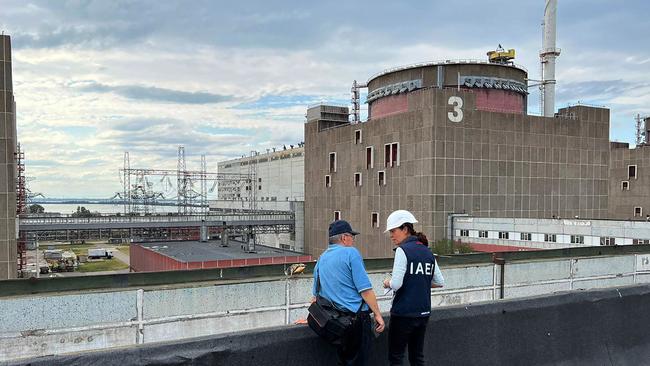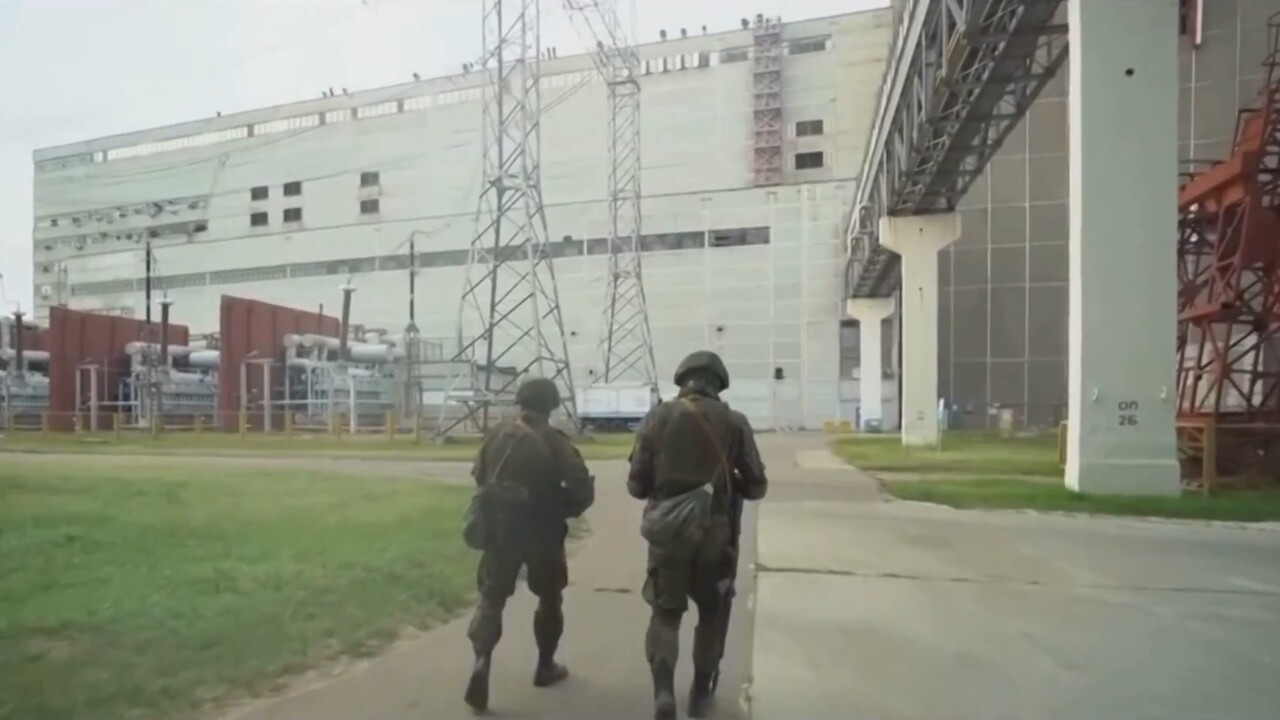‘Just not safe’: Workers flee crippled Ukraine nuclear plant
Zaporizhzhya power station is being run by only a third of staff after others fled amid constant shelling and warnings of disaster.

The nuclear power station on the front line of the Ukraine war is being run by only a third of its staff after others left or were taken away by the Russians for refusing to co-operate, one of its workers has told The Times.
The technician, who asked to be known only by his first name, Serhii, said that the Zaporizhzhya plant and the surrounding town was being shelled regularly from the Russian side. He and his wife said they could hear shells being fired from bases deeper inside Russian-held territory then landing in the town.
The plant’s last line to the power grid was disconnected on Monday after a fire broke out amid the shelling. A report released on Tuesday by the International Atomic Energy Agency (IAEA), the United Nations watchdog, outlined safety breaches at the plant caused by shellfire, for which each side is blaming the other.

Rafael Grossi, the IAEA director-general, who led the inspection team that visited the plant last Thursday and had to take shelter from the fighting, told the UN security council that the world was “playing with fire” by allowing the situation to continue. He did not identify either side as responsible for the shelling, prompting complaints from Russian diplomats, who wanted the Ukrainian side named.
Serhii said that he had fled the plant and the town at the end of last week after a shell landed outside his house. He and his wife have a girl aged three.
He spoke by telephone after The Times traced him among groups fleeing Russian-occupied territory. He asked for anonymity as he had relatives still working at the plant. “I think about 70 per cent of the staff have left, mostly the low-level workers,” he said. “I don’t know if that means there are enough to keep the plant running. Maybe.
“It wasn’t safe there. As we came off shift we would have to try to avoid the incoming missiles. We would have to run for shelter,” he added.
The Zaporizhzhya nuclear plant, the largest in Europe, is named after the region of Ukraine where it is situated, on the banks of the Dnipro river. Generating 6.7 gigawatts of power in peacetime, it provided a fifth of all Ukraine’s electricity. Most of its workers live in the surrounding town of Enerhodar.
On Tuesday a powerful explosion in the town cut off water and electricity. The Ukrainian authorities demanded that the Russians set up evacuation corridors for residents. “People en masse are reaching out to us for help,” Iryna Vereshchuk, a deputy prime minister, told Ukrainian television. “They are trying to leave the dangerous territory, but there are no corridors.”

Those willing to risk driving through the front lines can queue at a checkpoint at the village of Vasylivka, east of Enerhodar, to cross into Ukrainian territory. Here cars are waiting for up to five days to be searched by Russian soldiers. Those with small children, such as Serhii and his wife, were allowed to jump the queue, they said. They had to lie about his work as they said the Russians had banned any more nuclear plant workers from leaving.
Serhii, a machinist, said the Russians arrived after a battle that lasted from 8pm until 4am on March 4. One training facility at the plant was destroyed. He said some senior workers at the plant were taken away and have not been seen since. Other workers were told that the plant would be handed to Rosatom, the Russian state nuclear company, but this never happened and staff continued to receive orders from the Ukrainian equivalent, Energoatom.
Since then, the plant has been repeatedly shelled. The IAEA report showed a photograph of a hole in the roof of the building that holds fresh nuclear fuel and radioactive waste. It said there had also been damage to the roof of the building where the vehicle used to transport used fuel was stored, and to the central alarm facility.
It said that the Russian military were keeping vehicles at the plant, and that the Russians were also restricting access by technical staff to some areas of the plant, including cooling ponds.
Serhii said that the Russians had brought armoured trucks inside the building, and that some were even kept inside a reactor building. He added that he was sure that the shelling of the plant was coming from the Russian side.
Serhii’s father-in-law is among those still at the plant, but Serhii said the Ukrainian telephone network had been cut and workers were afraid to speak openly on the Russian lines available. It was clear, however, that others wanted to escape. Two IAEA inspectors have remained at the plant, while President Zelensky echoed the report’s call for a military exclusion zone round it.
The IAEA report agreed that the staff shortage was becoming critical. “The Ukrainian plant staff and managers reported to the team that 40 per cent of positions in the area of physical protection were not staffed, which significantly increased the workload for existing staff to ensure continued physical protection at the site,” it said.
The Times


